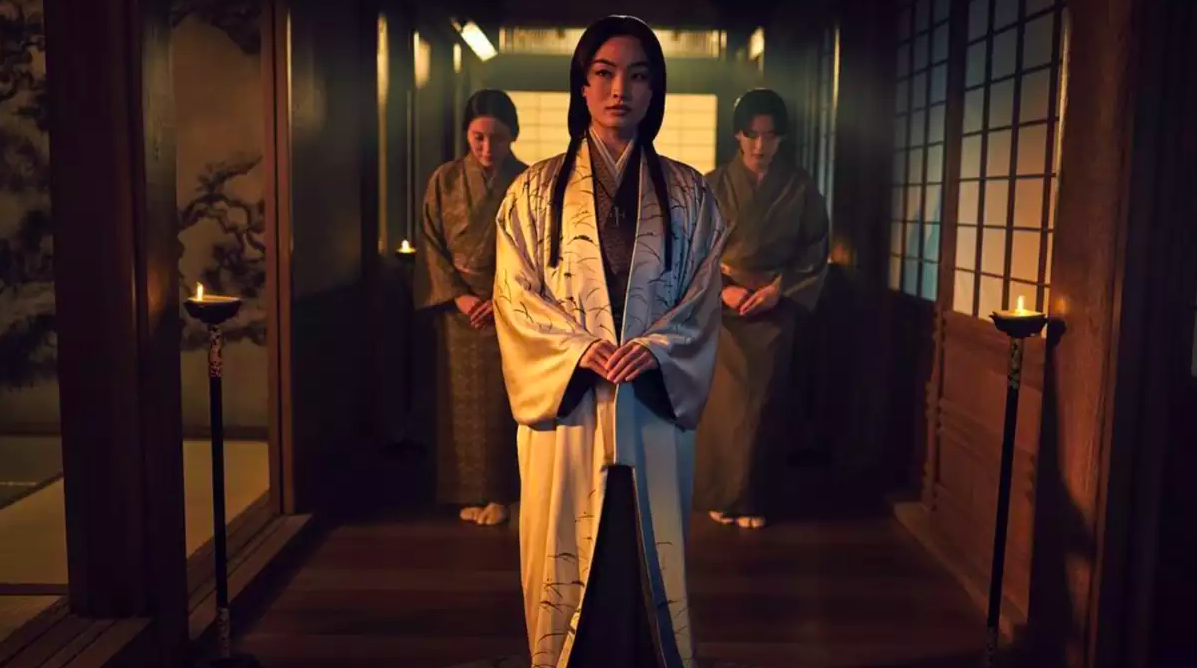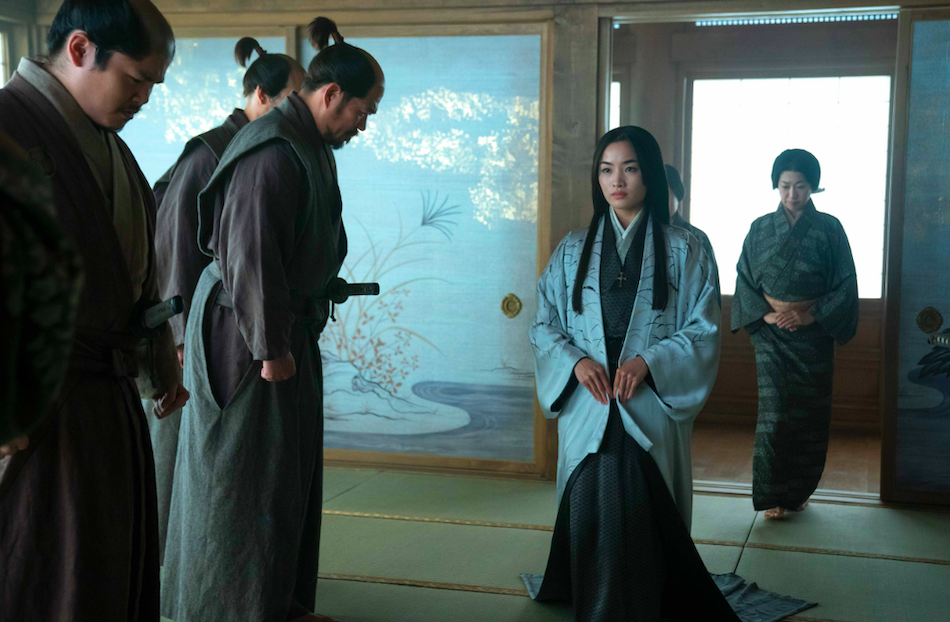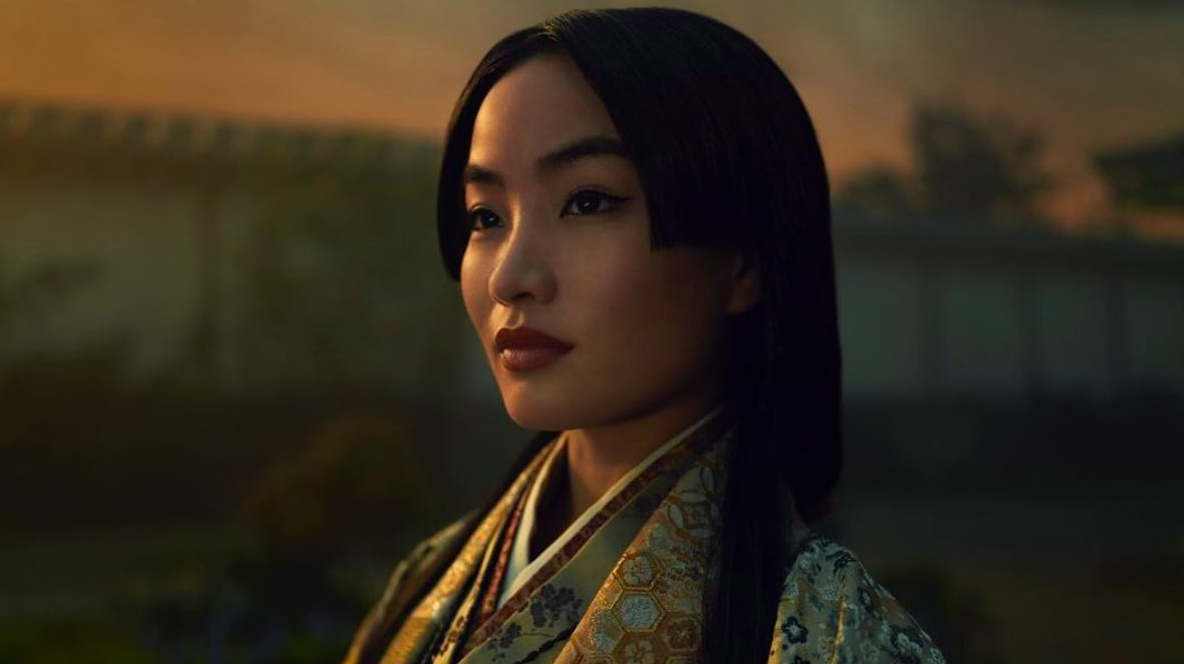In Hulu’s ‘Shogun,’ the audience is transported to a volatile period in Japanese history where the political stage is set for conflict, which worsens after the arrival of an English sailor. The clash of different cultures opens new doors that offer opportunities as well as danger, and only someone with the knowledge of the languages of the different people can create a bridge to make things easier. Lady Mariko Toda begins as that person, but it soon evolves into something much more. With the parallels that ‘Shogun’ has with real-life people and events, one becomes curious about the real woman who inspired Mariko’s character. SPOILERS AHEAD
Lady Mariko is Inspired by a Real Japanese Noblewoman

Lady Mariko Toda’s character in ‘Shogun’ is based on Hosokawa Garasha/Garcia, who belonged to an aristocratic family during the Sengoku period. Her given name was Akechi Tama, but she is better known as Garcia, which is the name she received during her Catholic baptism.
Mariko’s backstory in ‘Shogun’ is pulled from the story of Garcia, who was married to a samurai named Hosokawa Tadaoki when she was sixteen years old. Her father, Akechi Mitsuhide, was known for his betrayal of his daimyō, Oda Nobunaga, which turned Garcia into an outcast. Due to her father’s actions, she was sent to live alone in a small village but was eventually brought back to Osaka. It was through her maid that Garcia was introduced to Catholicism. At that time, converting to Christianity wasn’t exactly popular in the kingdom and was even termed punishable by Toyotomi Hideyoshi. Despite this, Garcia received her baptism, though in secret, and converted to the Catholic faith.
Much like Mariko in ‘Shogun,’ Garcia was fluent in Portuguese and Latin. However, unlike in the show, her services were not employed by the future shogun Tokugawa Ieyasu (the inspiration for Lord Yoshii Toranaga), and she never crossed paths with William Adams, who serves as the inspiration for the character of John Blackthorne in the series. In fact, apart from Garcia’s backstory, almost everything about Mariko is entirely fictional. She never left Osaka and died before she could have had a chance to meet with Adams.
How did Hosokawa Garcia Die?

Hosokawa Garcia died in 1600 when she was 37 years old. While she may not have been directly involved with Ieyasu as his translator, her death did have an impact on the way things eventually turned out for him. The power vacuum in the wake of Hideyoshi’s death created a very difficult environment in Osaka. Ieyasu and Ishida Mitsunari (who is the inspiration for Ishido Kazunari) were the most powerful of all regents. The rivalry between them led to a lot of conflict in the region.
In Ieyasu’s absence from Osaka, Ishido attacked the castle that housed the families of the king’s generals. He wanted to use them as leverage to get the generals on his side and help him win the war that would make him the ruler of the country. However, when the families felt threatened, they resorted to killing themselves. Garcia couldn’t do it due to suicide being considered a sin in her religion. However, according to some accounts, she asked her servant to kill her.
According to other versions of the story, it was her husband who had ordered the servants to kill her if her honor was at stake. While Ishido didn’t kill Garcia himself, her death caused a ripple in the Catholic community, who were his allies, and it later became one of the reasons why they removed their support from him, leading to Ieyasu’s victory in the coming war. Due to her untimely death, Garcia didn’t get to play a bigger role in history. However, in ‘Shogun,’ her story is expanded, and she is placed in a position that gives her more power than what appears on the surface.
Read More: Hatamoto Meaning in Shōgun, Explained


You must be logged in to post a comment.